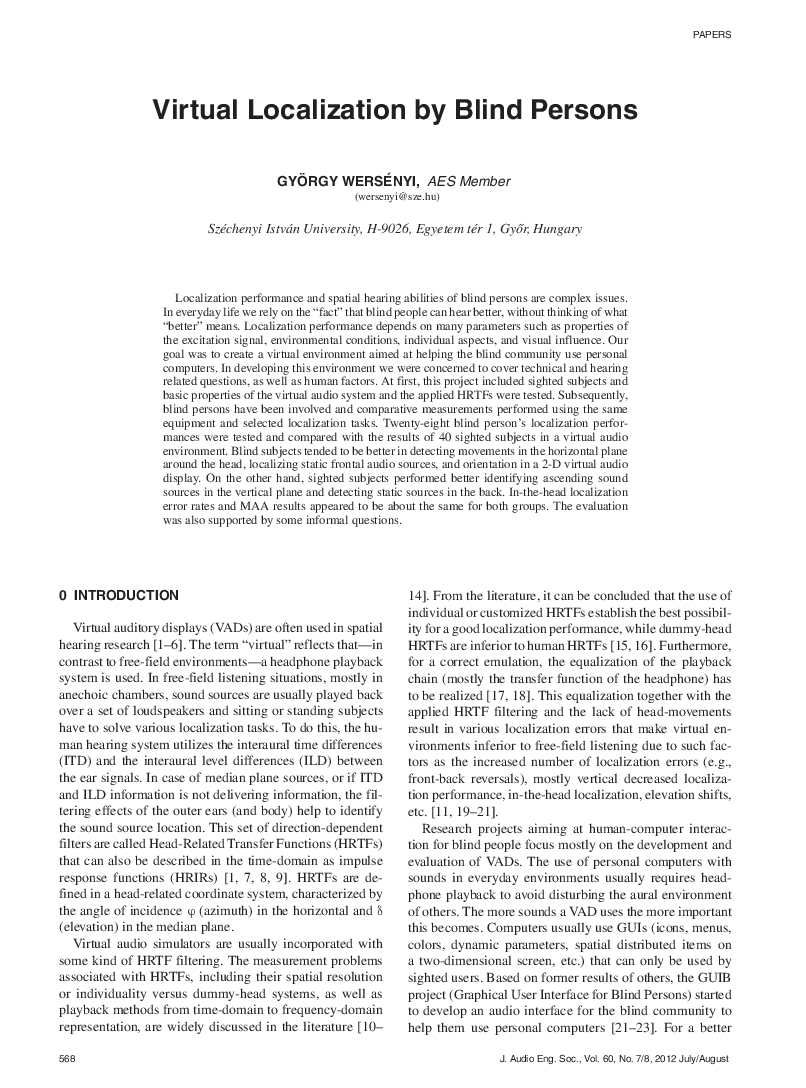Home / Publications / E-library page
You are currently logged in as an
Institutional Subscriber.
If you would like to logout,
please click on the button below.
Home / Publications / E-library page
Only AES members and Institutional Journal Subscribers can download
In order for blind people to better use personal computers, an auditory virtual environment can be used to present information that might otherwise be available only with vision. Auditory objects can be spatial placed in the virtual environment if the user can successfully identify their location. In contrast to sighted subjects, blind subjects were better at detecting movements in the horizontal plane around the head, localizing static frontal audio sources, and orientation in a 2-D virtual audio display. On the other hand, sighted subjects performed better identifying ascending sound sources in the vertical plane and detecting static sources in the back.
Author (s): Wersényi, György
Affiliation:
Széchenyi István University, Gyõr, Hungary
(See document for exact affiliation information.)
Publication Date:
2012-07-06
Import into BibTeX
Permalink: https://aes2.org/publications/elibrary-page/?id=16368
(145KB)
Click to purchase paper as a non-member or login as an AES member. If your company or school subscribes to the E-Library then switch to the institutional version. If you are not an AES member Join the AES. If you need to check your member status, login to the Member Portal.

Wersényi, György; 2012; Virtual Localization by Blind Persons [PDF]; Széchenyi István University, Gyõr, Hungary; Paper ; Available from: https://aes2.org/publications/elibrary-page/?id=16368
Wersényi, György; Virtual Localization by Blind Persons [PDF]; Széchenyi István University, Gyõr, Hungary; Paper ; 2012 Available: https://aes2.org/publications/elibrary-page/?id=16368